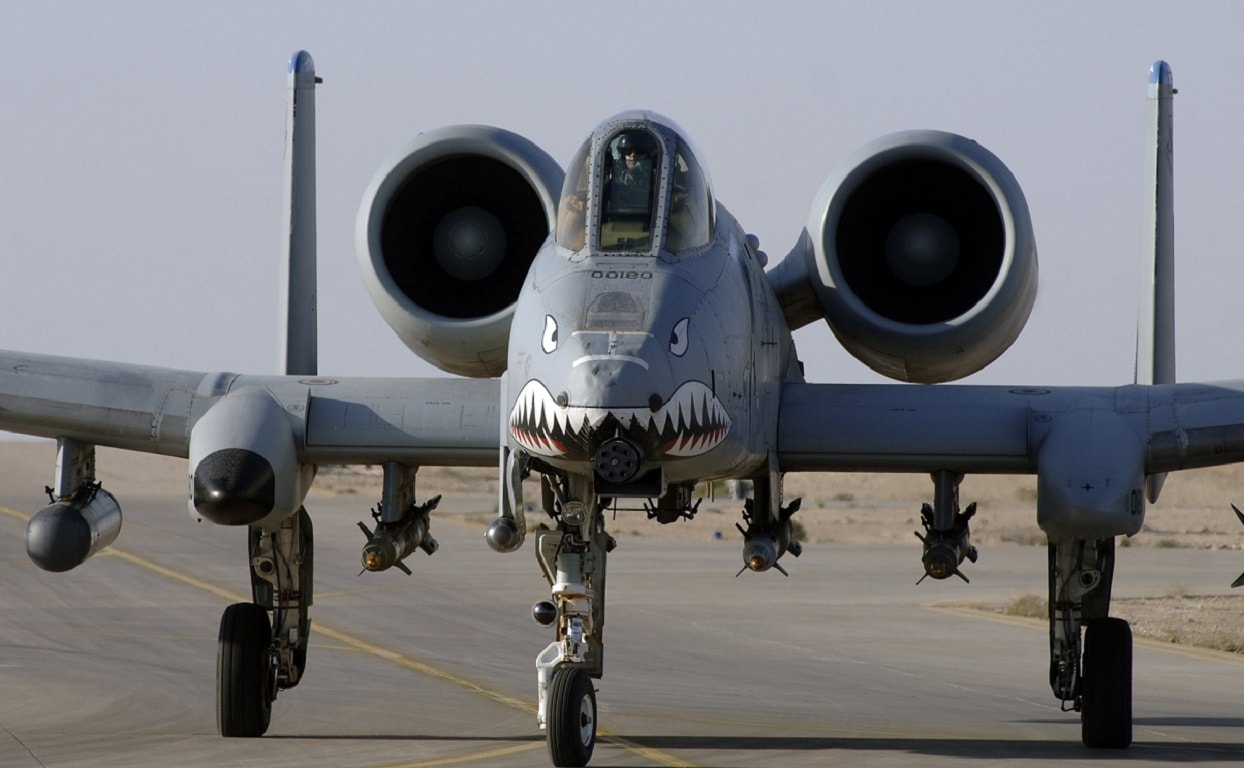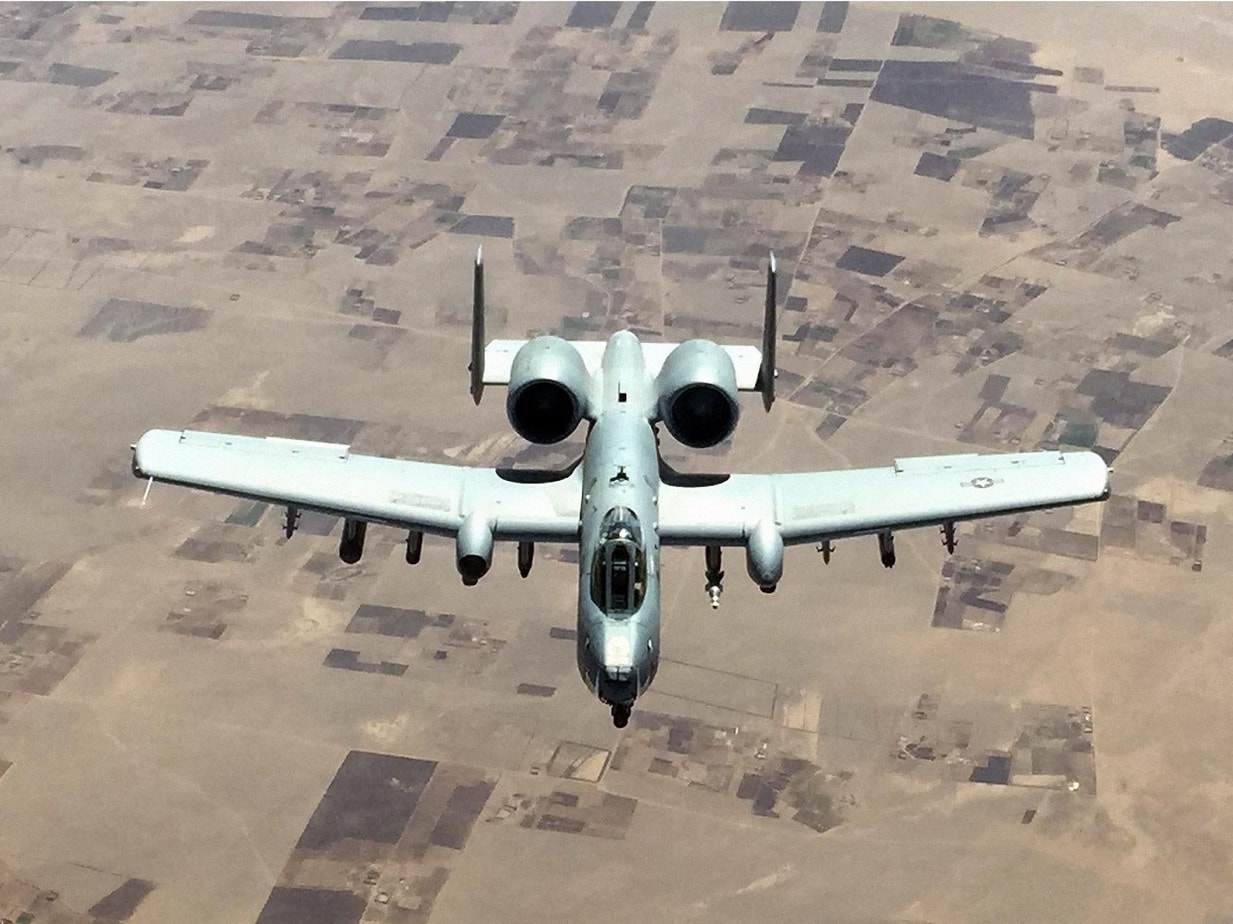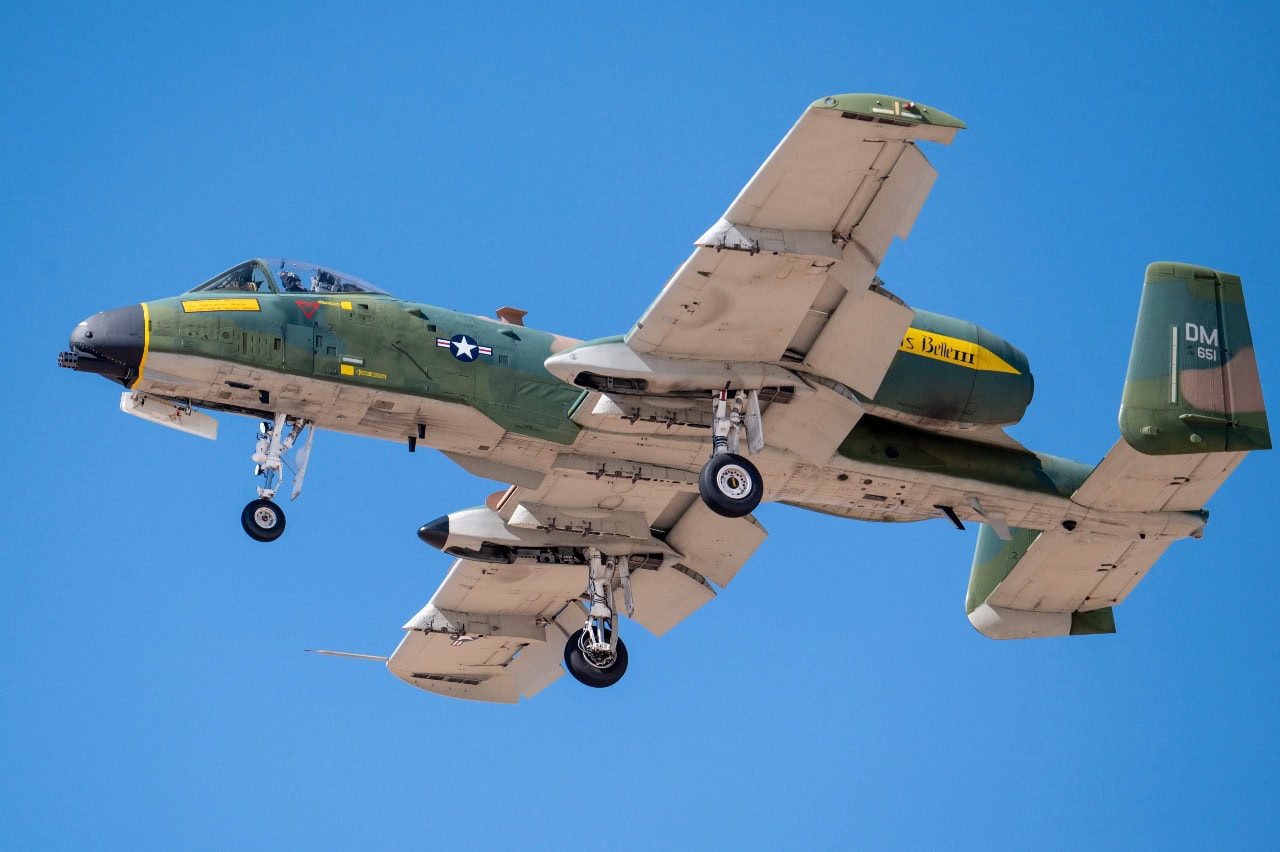Key Point: The A-10 Warthog, affectionately known as the “Flying Tank,” remains a beloved platform for its unparalleled close air support capabilities.
-Armed with a 30mm cannon capable of firing 70 rounds per second, the A-10 can devastate enemy ground forces while absorbing substantial damage, thanks to its titanium hull and redundant systems.
-Its ability to keep flying—even on one wing—has cemented its legendary status.
-While the Air Force has moved to phase out the A-10 in favor of faster jets like the F-35, the Warthog’s unique combat role and proven durability have kept it indispensable in specific tactical scenarios worldwide.
A-10 Warthog: The Indestructible Close-Air Support Legend Lives On
The “Flying Tank” A-10 Warthog’s 30mm cannon is armed with 1,150 rounds and fires as many as 70 rounds per second, a rate of fire and lethality that explains one of many reasons why the powerhouse aircraft has earned a permanent resting place in the hearts of ground soldiers.
This cannon, which aligns in a straight-ahead firing configuration parallel to the nose of the fuselage, allows the aircraft to simply lower its front and “blanket” and “smother” an enemy ground area with lethal and suppressive fire from the air.
A large part of the aircraft’s well-known and celebrated durability is not only due to its tank-like titanium hull but also a result of its built-in redundancy, an aspect of the plane strongly supported and enabled by the 30mm cannon, a former A-10 pilot told Warrior years ago.

An A-10 Thunderbolt II prepares to take off from Al Asad Air Base, Iraq to provide close air support to ground troops in Iraq. The 438th Air Expeditionary Group A-10 jets perform 10 sorties daily–900 in this last four months. (U.S. Air Force photo/Tech. Sgt. Cecilio M. Ricardo Jr.)
“So when I lose all the computers and the calculations, the targeting pod and the heads up display, you can still point the aircraft using a degraded system at the target and shoot. We are actually trained for that,” former A-10 pilot Lt. Col. Ryan Haden, 23rd Fighter Group Deputy, Moody AFB, told Warrior in a previous interview several years ago.
The A-10 Warthog is truly something special for many reasons.
A-10 Flies Through Enemy Fire
As Haden explained, if most aircraft systems are damaged or even destroyed by the enemy, the A-10 can still slowly hover above ground combat and use line of sight to keep firing the cannon while taking small arms fire.
“The 30mm cannon has 7 barrels. They are centered the way the aircraft fires. The firing barrel goes right down the center line. You can point the aircraft and shoot at the ground. It is designed for air-to-ground attack,” Haden told Warrior Maven.
In a tactical sense, the plane can destroy maneuvering enemy ground troops with its high-rate-of-fire cannon while absorbing varying degrees of small-arms fire.
This kind of combat performance explains why the A-10 has so many years of impactful and highly successful combat performance.
Flying A-10 On One Wing
The built-in redundancy of the A-10 is so adequate that a former US Gulf War A-10 pilot told Warrior Maven years ago that he could keep flying and essentially “save” himself and the aircraft with one wing after the other wing had been shot off by incoming enemy fire.
By design, the A-10 is built with redundant systems to support this kind of contingency, a combat performance aspect of the plane that has helped it earn a “soulful” love from servicemembers.
The A-10, while finally slowly being divested from the Air Force, has endured years of service attempts to cancel and remove the platform from the force yet survived due to its strong military and Congressional support.

A-10 Warthog. Image Credit: Creative Commons.
Arguably, the A-10 will be viable as a critical and unique Close Air Support platform for years, depending upon the combat environment in which it operates.
In recent years, the Air Force has made deliberate, thought-out moves to replace the A-10 as a Close Air Support platform with faster fixed-wing fighter jets such as an F-16 or F-35. Such an effort has been the focus of years of debate for various factors, such as the potential vulnerability thinly skinned fighter jets might have against incoming small arms fire.
However, the thinking is that fighter jets can perform the mission with faster-range sensors and precision weaponry while remaining survivable successfully.
Also, the threat equation in recent years has evolved to the point where much greater percentages of enemy forces are likely to be armed with shoulder-fired anti-aircraft missiles with much greater destructive force than small-arms fire.
A-10s to the Philippines
Numerous A-10 proponents maintain that the time-tested “flying tank” should remain a vital part of the force, questioning the Air Force’s decision to divest the aircraft.
According to an interesting Air Force report, a group of A-10 aircraft visited the Philippines in December 2024 to support training and combat preparation initiatives.
This suggests that there may still be a substantial prevailing consensus that the combat value of the A-10 can never be fully replicated or replaced.

A-10 Warthog.
In addition, this move indicates that the A-10 Warthog might prove quite valuable in certain tactical scenarios in a great-power warfare engagement.
About the Author: Kris Osborn
Kris Osborn is the Military Technology Editor of 19FortyFive and President of Warrior Maven – Center for Military Modernization. Osborn previously served at the Pentagon as a highly qualified expert in the Office of the Assistant Secretary of the Army—Acquisition, Logistics & Technology. Osborn has also worked as an anchor and on-air military specialist.

